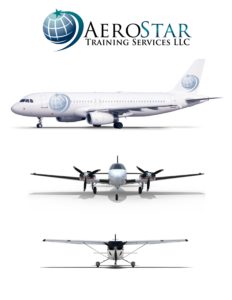by Kevin Teeter
A few years back, a couple of brothers were working in a bicycle shop dreaming of bigger and better things. They weren’t working tirelessly to develop the newest fifteen gear featherweight long distance touring bicycle. They were in fact, as you may have guessed, designing the world’s first powered aircraft. Their invention was not only a successful proof of concept, it sparked the fire of creativity lying dormant in so many others around the world who spent countless hours staring enviously at soaring birds. As aviation began to grow, more and more strange and new flying machines came into existence. Most of these machines housed one pilot with one set of flight controls. The knowledge required to fly the aircraft was passed from the pilot who survived his time in the airplane, to the pilot who was about to fly it. As you can imagine, this resulted in a fairly steep learning curve.
Today’s flight training is a little more thorough than the old concept of “keep the pointy end forward and give’er some gas.” We have learned that aircraft with two seats are better trainers than those with just a single seat. We also learned that having two sets of controls is better than one set. Another important creation in the world of flight training is the Flight Instructor. An individual whose sole purpose in life is to live and breathe aviation while dispensing pearls of aeronautical wisdom to eager trainees. Perhaps that’s a little “too” idealistic of a description, but at least that is their goal. The method used to convey this information varies from instructor to instructor. Some can convey the most complex aircraft system or meteorological concept through little more than a brief discussion and a drawing on a chalkboard. Others use model aircraft, bicycle wheels, propellers, blow-dryers, wind-tunnels, gyroscopes, and anything else they can get their hands on to solicit that “eureka” moment of understanding from their students.
Just thumb through your favourite pilot shop magazine and you will find page upon page of flight training gadgetry. The initial reaction of student pilots seems to be first, buy the biggest flight bag they can get their hands on, and second, fill that bag with as many of these gadgets as they can afford. This approach is quite expensive and will most likely lead to an unfavourable weight and balance in the aircraft. One gadget that this flight instructor has happily fallen victim to is the iPad.
The iPad has proven to be the Swiss Army knife of both flight and flight training. Through various apps available for download the instructor can cover nearly every phase of flight. Current weather charts, winds aloft, cloud tops, NOTAMS, TFRs, flight planning, runway lengths, instrument approaches, are all available with the swipe of a finger……. and that’s just scratching the surface of its capabilities. Every pilot is taught that the aircraft behaves differently when it enters ground-effect, but how many pilots have actually “seen” it?

Concepts that were once static images on a whiteboard such as Bernouli, wingtip vortices, boundary layer, dihedral, Newton, and even stalls can now be demonstrated in real-time.
With comparable devices in aviation running several thousand dollars more than the most well equipped iPad, one can safely bet we will be seeing a long and happy life from the technological wonder. For the iPad, the sky is does not seem to be the limit, just another place for it to shine.
_____________________
Kevin began flying in 2003 while attending high school in Bryant, Arkansas. He attended college at Embry Riddle Aeronautical University and graduated from the Daytona Beach campus with a Bachelor’s Degree in Aeronautical Science. After college, Kevin moved to Orlando where he is currently flight instructing at the Executive Airport.

